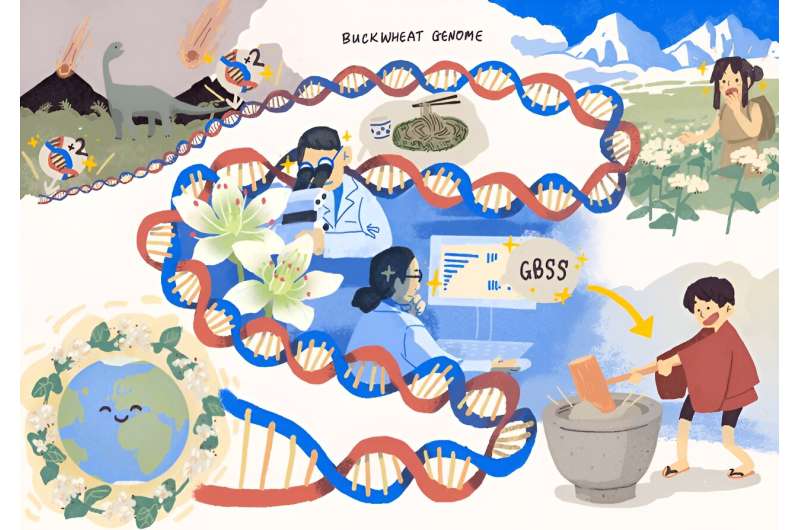This article has been reviewed according to Science X's editorial process and policies. Editors have highlighted the following attributes while ensuring the content's credibility:
fact-checked
peer-reviewed publication
trusted source
proofread
High-precision genome sequencing of buckwheat breeds hope for future harvests

A research group led by Kyoto University's Graduate School of Agriculture has deciphered buckwheat's high-precision chromosomal-level genome sequence, a key step toward unraveling the evolution of the buckwheat genome and the origins of the cultivated crop.
By altering specific genes using a method independent of common genome-editing techniques, the researchers successfully developed a self-fertile buckwheat variety as well as a new type of the crop with a sticky, mochi-like texture. This breeding method may contribute to a more diverse range of orphan crops than what is possible with existing genome editing technologies.
The paper "Genome sequencing reveals the genetic architecture of heterostyly and domestication history of common buckwheat" appeared on 10 August 2023 in Nature Plants.
With the world's population predicted to reach 9.7 billion by 2050, increasing dependence on three major grain crops—rice, wheat, and corn—has raised interest in less-common orphan crops. Deciphering these crop genomes using next-generation sequencing technologies may promote their efficient breeding, representing a crucial step toward achieving the United Nations' Sustainable Development Goals of "Zero Hunger," "Good Health and Well-Being," and "Responsible Consumption and Production."
The international research team that made these findings is led by Yasuo Yasui from the Graduate School of Agriculture at Kyoto University, and includes RIKEN, Japan's National Agriculture and Food Research Organization; Chiba University; Kyoto Prefectural University, Kazusa DNA Research Institute; The Graduate University for Advanced Studies or SOKENDAI; Yunnan Agricultural University; and the University of Cambridge.
More information: Jeffrey A. Fawcett et al, Genome sequencing reveals the genetic architecture of heterostyly and domestication history of common buckwheat, Nature Plants (2023). DOI: 10.1038/s41477-023-01474-1
Journal information: Nature Plants
Provided by Kyoto University



















